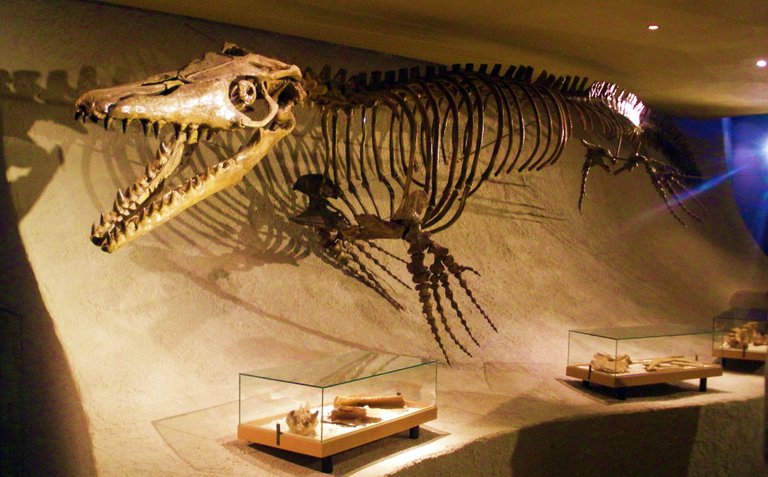The Meuse River Lizard, the Mosasaur
The mosasaur was a species of aquatic reptile that lived from 85 to 65 million years ago. They were one the last aquatic reptiles that lived with the dinosaurs, and like the dinosaurs suffered from global extinction. Mosasaurs are related to modern day monitor lizards, and are the closest prehistoric relative to snakes.
A mosasaur skeleton was one of the first skeletons ever found by scientists. The first skeleton was found in 1764, in a limestone quarry by the Dutch city of Maastricht. However, scientists did not become interested in it until a second skeleton was found in 1770. At that time, the church was quite powerful and many scientists were ostracised, because their beliefs were much different from the church’s beliefs; scientists believed that the skeletons of prehistoric animals proved that animals existed on Earth before man. The name “mosasaur” is a combination of both Latin and Greek; “mosa” is Latin for the Meuse River that goes through the city of Maastricht, “Saur” is Greek for lizard, so the full translation of the name would mean “ Meuse River lizard”.
The mosasaur was an aquatic predator that lived exclusively in the ocean; they slept, ate and gave birth to live young in the water. Mosasaurs were extremely varied in size ranging from three meters to seventeen meters long. Their bodies resembled today’s monitor lizard, but they had flippers for feet. Scientists believe that they used their flippers and long broad tails to move through the ocean’s waters much like a crocodile.
Mosasaurs were carnivores and preyed on sea urchins, fish, giant sea turtles, sharks, other sea reptiles, dinosaurs who were swimming in the ocean and other mosasaurs. Large pterosaurs and large aggressive fish hunted smaller mosasaurs, while the larger mosasaurs only feared the largest and most aggressive of ocean life.
At one time, the mosasaur was one of the apex predators of the ocean, today they are a skeleton that we can see in museums and in books. Their extinction was not brought about by over-hunting or pollution, but by a force far more potent than man is. However, many of the mosasaurs relatives still live with us today and many of them are on the brink of extinction, brought about by humans. I hope that these relatives of the once formidable mosasaur will also not just become skeletons in a museum.
Sources
https://www.fossilguy.com/gallery/vert/reptile/mosasaur/index.htm
https://en.wikipedia.org/wiki/Mosasaurus
https://www.mindat.org/taxon-8501245.html
Posted with STEMGeeks

Congratulations @ermola! You have completed the following achievement on the Hive blockchain and have been rewarded with new badge(s) :
You can view your badges on your board and compare yourself to others in the Ranking
If you no longer want to receive notifications, reply to this comment with the word
STOPDo not miss the last post from @hivebuzz: